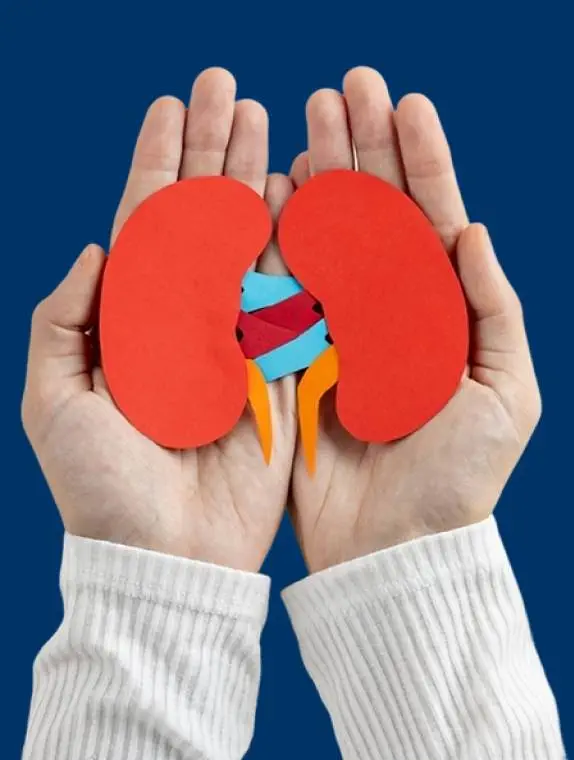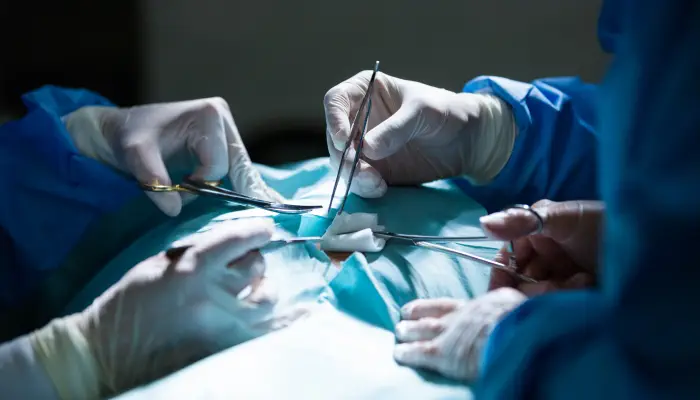TURBT Procedure

TURBT: Essential Insights Into Bladder Cancer
Transurethral resection of bladder tumour, or TURBT, is a diagnostic and therapeutic procedure commonly used for bladder cancer. It involves surgically removing bladder tumours via the urethra, the tube that eliminates urine from the bladder to the outside of the body.
TURBT is the gold standard for diagnosing and treating non-muscle-invasive bladder cancer (NMIBC). It helps determine the stage and grade of the cancer, which are critical factors for planning treatment.
Dr. Aarthy’s expertise and mastery of advanced imaging and surgical techniques make her a valuable resource for TURBT procedures. This best robotic urologist in Chennai is meticulous in creating personalised treatment plans. She emphasises the importance of close follow-up care, all of which aim to achieve the best possible outcomes for those with bladder cancer.
Why is TURBT Necessary?
Dr. Aarthy may recommend TURBT for the following medical scenarios:
Empower Your Wellness Journey With TURBT

- Before Surgery
- What to Expect?
- Post-Surgical Care
TURBT Surgery Preparation: Steps Before Surgery
Inform Dr Aarthy about your medication intake, allergies, and medical history. She may advise you to temporarily stop certain medications, such as blood thinners, warfarin, aspirin, and herbal supplements, to minimise risks during the procedure.
Dr Aarthy will recommend several blood and urine tests and an electrocardiogram (ECG) to evaluate your overall health and fitness for anaesthesia.
Dr Aarthy will also advise you to refrain from eating or drinking for at least 6-8 hours prior to your procedure to minimise complications from anaesthesia.
Since TURBT is usually performed under general or spinal anaesthesia, it’s essential to arrange for a ride home afterwards. Don’t forget to enlist a friend or family member to help you recover comfortably after your procedure.
TURBT Procedure: What to Expect?
An anaesthetist will administer either General Anaesthesia, which renders you fully unconscious or spinal anaesthesia, to numb the lower half of your body.
A cystoscope is a thin, flexible tube with a camera. It will be gently inserted into the urethra and guided into the bladder.
The surgeon meticulously extracts the bladder tumour using specialised surgical tools connected to the cystoscope.
Once the tumour has been excised, the site is cauterised using heat or electric current to control bleeding and reduce the risk of recurrence.
Dr Aarthy will carefully examine the bladder to confirm that all visible tumours have been excised and that there are no indications of any further growth.
Before closing the incision, your doctor will place a catheter in the bladder to drain the urine and facilitate healing. The catheter will remain in place for a few days until your doctor decides it is safe to remove it.
TURBT: Post-Surgical Care
You will be continuously monitored for a few hours to check your vital signs and make sure there are no immediate issues arising from the anaesthesia.
A catheter is often left in place for 1-3 days to help drain urine and allow the bladder to heal.
You are expected to experience mild pain or a burning sensation while voiding your bladder. Dr Aarthy may prescribe medications to alleviate discomfort and pain.
Hydrate your body to flush out any existing blood clots and prevent urinary infection episodes.
Refrain from heavy lifting, vigorous activities, and sexual relations for a minimum of 2-3 weeks after your surgery.
Dr Aarthy may suggest cystoscopy or other imaging tests to ensure complete removal of your tumours and to look for signs of recurrence.
Keep an eye out for any symptoms like heavy bleeding, continuous pain, and trouble urinating. In case of such instances, consult Dr Aarthy immediately.
How TURBT Benefits Your Renal Health

Effective Relief
Provides reliable tissue sampling, ensuring precise evaluation of the tumour’s characteristics, including the extent and stage of the cancer.
Easier Technique
Involves no external incisions, resulting in less discomfort, minimal healing time, and negligible scarring.
Safe Excision
Enables the safe excision of tumours from the bladder lining while preserving the integrity of the surrounding tissues and the organ itself.
Speedy Recovery
Allows you to resume regular activities within a few days to weeks after the procedure, depending on individual recovery rates.
Patient Convenience
Allows for same-day discharge as it is an outpatient procedure. This helps in minimising disruptions to your daily life.
Proven Success
Boasts a high success rate in diagnosing and treating non-muscle-invasive bladder cancer, making it a trusted choice for targeted cancer management.
Get the Best Treatment For Bladder Cancer





